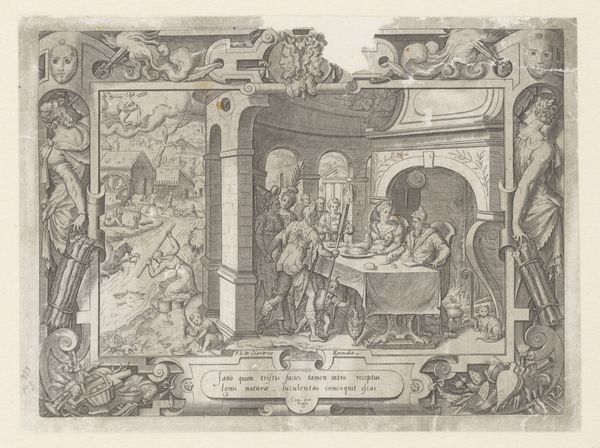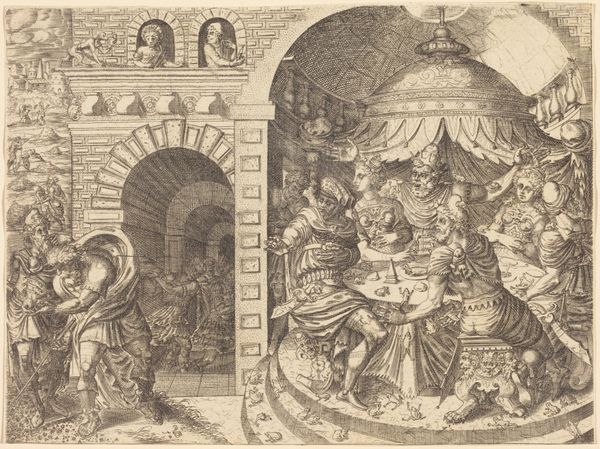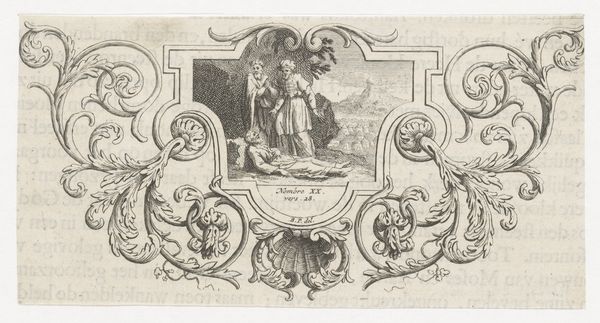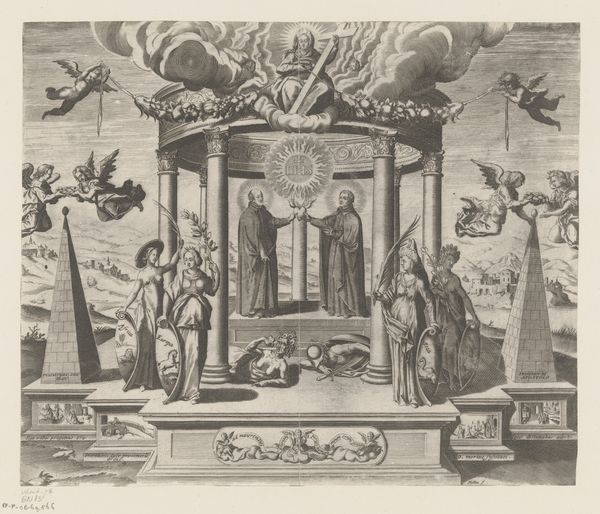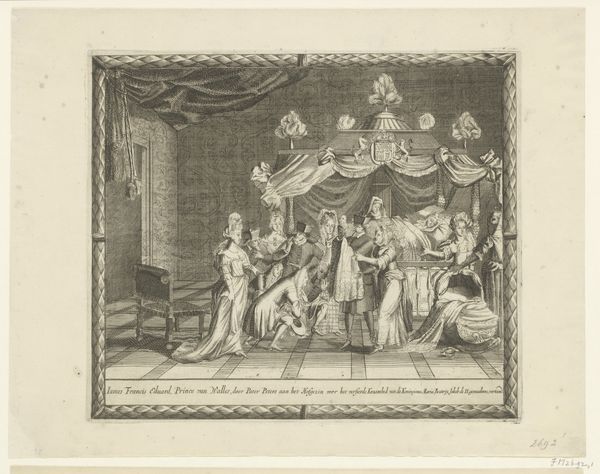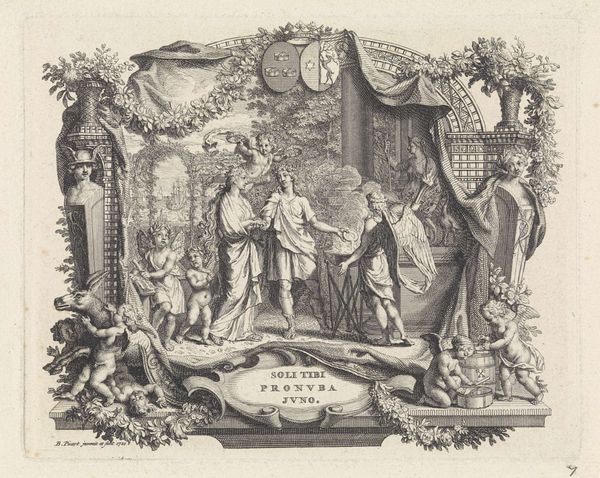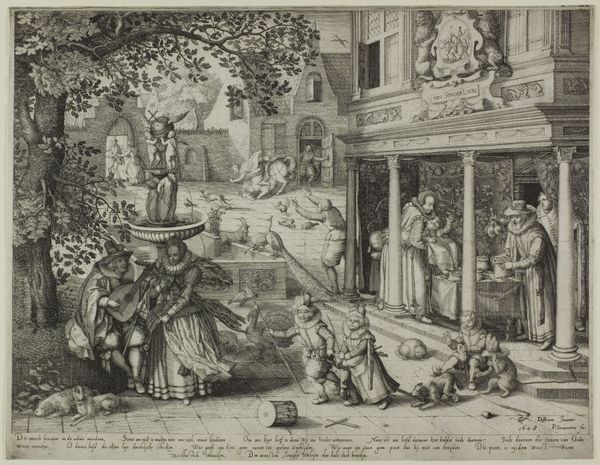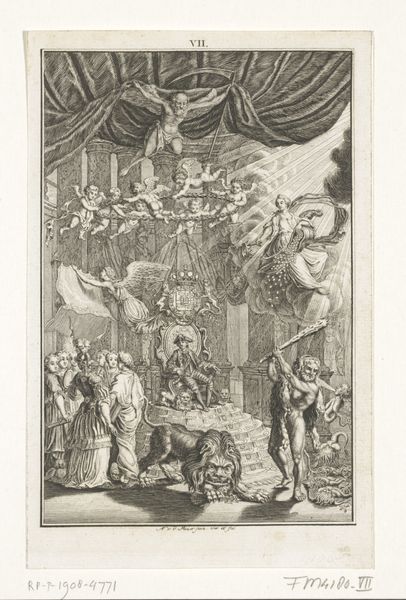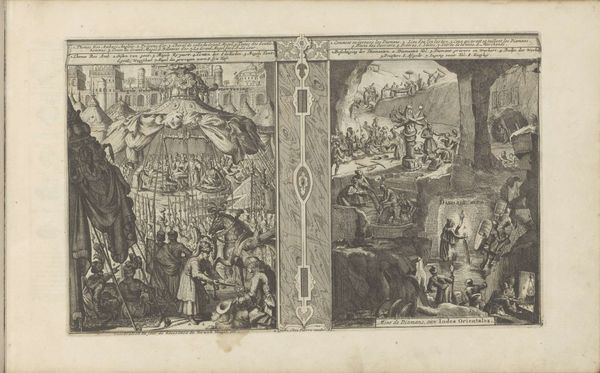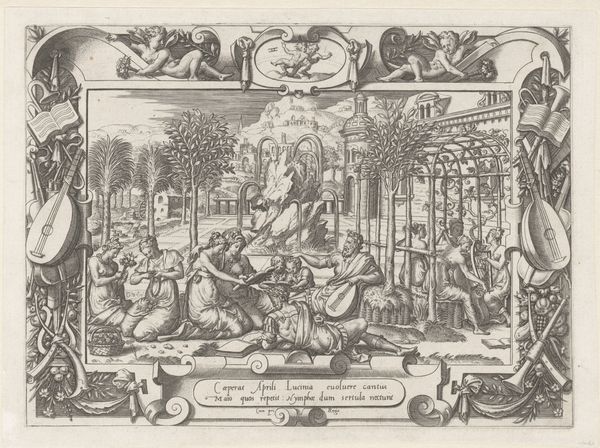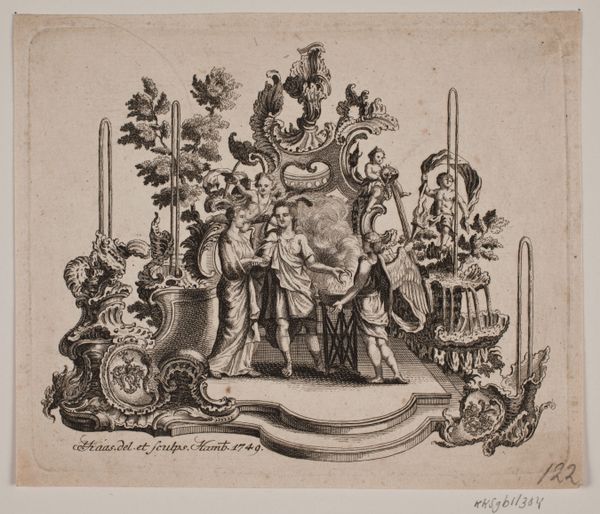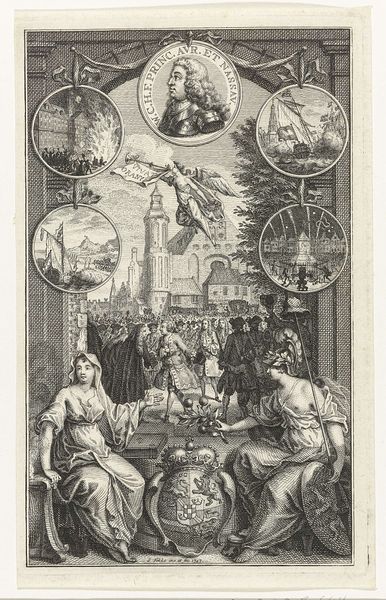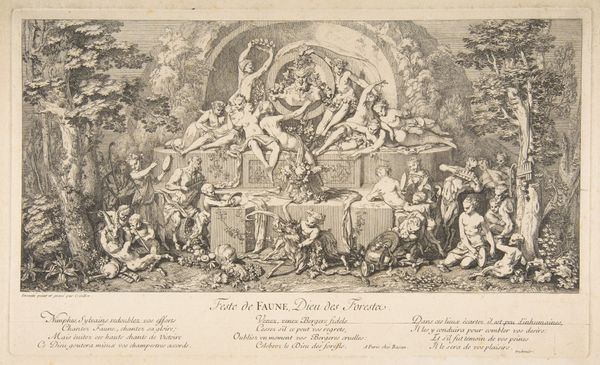
Titelblad til ligprædiken over Ida Langs med fremstilling af Kristus som gartner og Maria Magdalena 1651
0:00
0:00
drawing, print, ink, engraving
#
portrait
#
drawing
#
narrative-art
#
baroque
# print
#
landscape
#
figuration
#
ink
#
history-painting
#
engraving
Dimensions: 192 mm (height) x 288 mm (width) (plademaal)
Curator: Oh, I feel a sense of both serenity and profound sorrow emanating from this piece. The fine lines and detail almost shimmer despite the somber theme. What do you make of it? Editor: The artwork, "Titelblad til ligprædiken over Ida Langs med fremstilling af Kristus som gartner og Maria Magdalena," created by Hans Andreas Greys in 1651, certainly has a lot to unpack. At first glance, one might just see a historical engraving, but it’s much more than that. It's a visual text steeped in baroque symbolism and complex social commentary. Curator: Definitely baroque with the way it weaves together religious narrative, landscape elements, and... wait a minute, are those family crests surrounding the central scene? It's so fascinating how personal grief intersects with broader social structures and spiritual beliefs. Grief almost becomes… public property. Editor: Precisely! These aren't merely decorative; they represent the lineage and social standing of the deceased, Ida Lang. The prominent display highlights the intersection of individual identity with the collective memory of the aristocracy, which is crucial for understanding the power dynamics at play during this era. This memorial isn’t just for Ida; it’s also a reaffirmation of her family's status in society. Curator: That's a darker twist than I initially perceived, actually. What really hits me is the artist’s rendering of Christ as a gardener, greeting Mary Magdalene. It's an intimate and human depiction embedded in an almost rigidly formal structure of the engraving, crests and all. There is something really human nestled in all that classism! Editor: Right. The image plays on that post-Resurrection narrative—the transformative power of faith, and a nod to the labor that transforms and sustains life. Within a patriarchal system, a woman becomes the symbolic bridge between humanity and the divine. Think of the layers! Social status, gendered religious experience and salvation. Curator: The work really does demand deeper attention the more you look. Initially, I felt its quiet melancholic aura but now the complexity, almost theatricality of the era, overshadows that feeling. What a window into both the personal and public dimensions of grief. Editor: Agreed. It highlights the degree to which personal stories were shaped by public forces, revealing that even in grief, identity and power are indelibly linked. An early form of using artistic expression to write herstory in a world determined to write history instead.
Comments
No comments
Be the first to comment and join the conversation on the ultimate creative platform.
